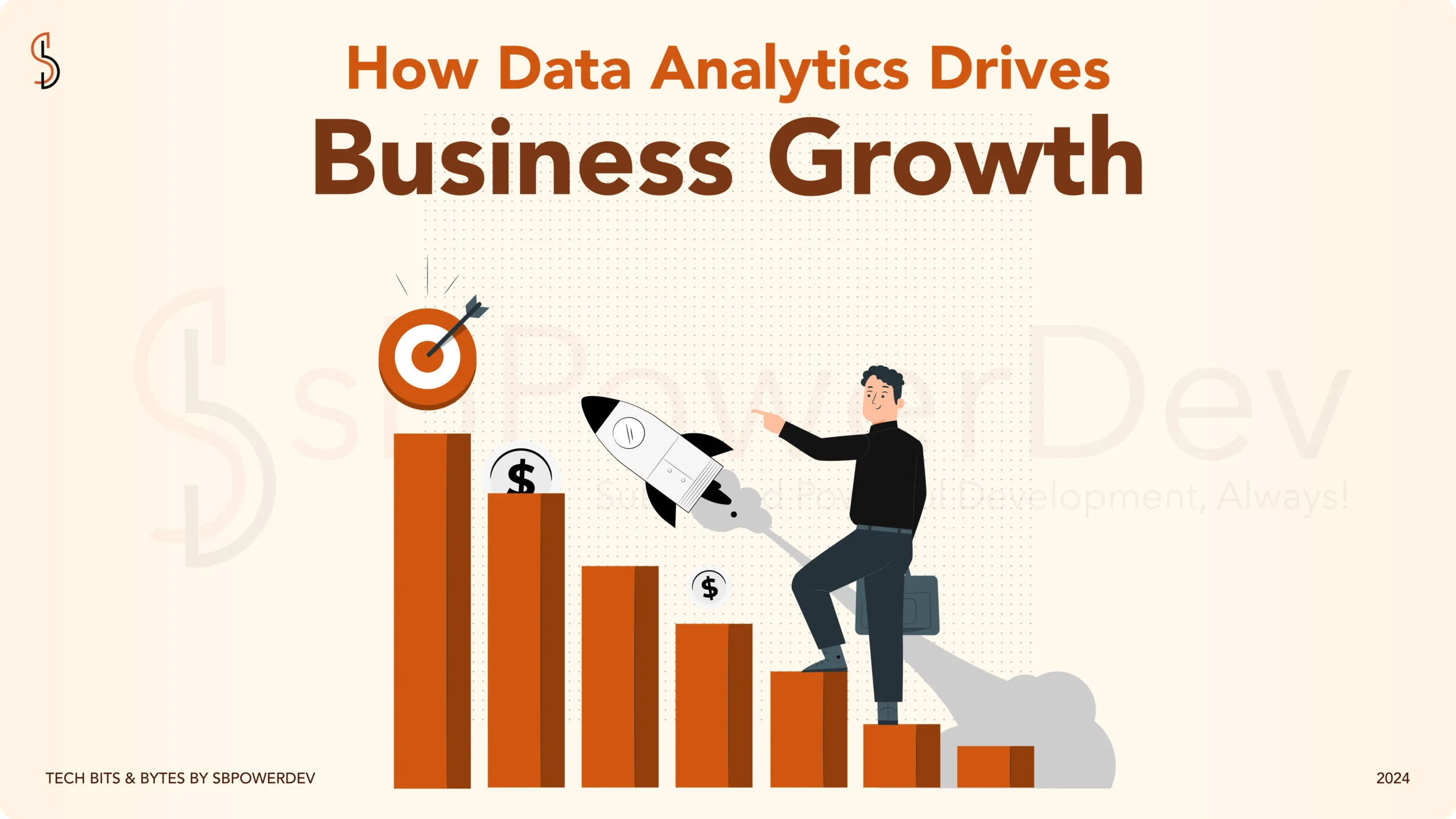Introduction
In today’s data-driven world, businesses are constantly seeking new ways to gain a competitive edge and drive growth. One powerful tool that has emerged to meet this need is data analytics. By harnessing the power of data, organizations can uncover hidden opportunities, make informed decisions, and propel their business forward. In this blog post, we will explore the role of data analytics in driving business growth and examine how organizations can leverage data to uncover untapped potential.
The Rise of Data Analytics
The advent of technology has led to an explosion of data generation across various industries. From customer transactions and social media interactions to website traffic and sensor data, organizations are inundated with vast amounts of information. However, simply collecting data is not enough. To extract value from this data, businesses need the tools and techniques to analyze it effectively. This is where data analytics comes into play. Data analytics involves the process of examining, cleansing, transforming, and modeling data to uncover meaningful insights and support decision-making. With the advancements in technology and the availability of sophisticated analytics tools, organizations now have the ability to unlock the full potential of their data.
Identifying Hidden Opportunities
One of the primary benefits of data analytics is its ability to identify hidden opportunities within a business. By analyzing large datasets, organizations can uncover patterns, trends, and correlations that may not be immediately apparent. These insights can reveal new market opportunities, highlight emerging trends, or identify areas for improvement within the organization. For example, a retail company may use data analytics to analyze customer purchasing behavior and identify products that are frequently purchased together. Armed with this information, the company can optimize its product placement strategy, bundle related products, and increase sales revenue. Similarly, a manufacturing company may use predictive analytics to forecast equipment maintenance needs and prevent costly downtime. By analyzing historical maintenance data and equipment performance metrics, the company can identify patterns that indicate when a machine is likely to fail. This proactive approach to maintenance not only reduces downtime but also extends the lifespan of equipment, resulting in cost savings and improved operational efficiency.
Enhancing Decision-Making
In addition to uncovering hidden opportunities, data analytics also plays a crucial role in enhancing decision-making. By providing decision-makers with timely, relevant, and actionable insights, data analytics empowers organizations to make informed decisions that drive business growth. For example, a marketing team may use data analytics to analyze customer demographics, preferences, and behavior to tailor marketing campaigns and messaging. By segmenting customers based on their characteristics and past interactions, the team can deliver targeted messages that resonate with each audience segment, leading to higher engagement and conversion rates. Similarly, a financial institution may use predictive analytics to assess credit risk and make lending decisions. By analyzing borrower data, credit scores, and economic indicators, the institution can evaluate the likelihood of default and determine the appropriate terms for loans. This data-driven approach enables the institution to mitigate risk while maximizing profitability.
Improving Operational Efficiency
Another key benefit of data analytics is its ability to improve operational efficiency within an organization. By analyzing operational data and identifying inefficiencies, organizations can streamline processes, optimize resource allocation, and reduce costs. For example, a supply chain manager may use data analytics to optimize inventory levels and reduce carrying costs. By analyzing historical sales data, demand forecasts, and supplier performance metrics, the manager can determine the optimal inventory levels for each product and location. This ensures that the organization has the right amount of inventory on hand to meet customer demand while minimizing excess inventory and associated holding costs.
Similarly, a healthcare provider may use data analytics to improve patient outcomes and reduce hospital readmissions. By analyzing patient data, treatment protocols, and outcomes, the provider can identify patterns that indicate which patients are at high risk for readmission. Armed with this information, the provider can implement targeted interventions, such as post-discharge follow-up care and medication management, to reduce readmission rates and improve patient care.
Leveraging Advanced Analytics Techniques
As organizations seek to unlock hidden opportunities and drive business growth, they are increasingly turning to advanced analytics techniques such as machine learning, artificial intelligence, and predictive modeling. These techniques enable organizations to uncover deeper insights, make more accurate predictions, and automate decision-making processes.
For example, a retail company may use machine learning algorithms to analyze customer browsing behavior and personalize product recommendations in real-time. By analyzing past purchases, browsing history, and demographic data, the algorithm can predict which products are most likely to appeal to each individual customer and recommend them accordingly. This personalized approach to marketing not only increases sales but also enhances the customer experience. Similarly, a transportation company may use predictive modeling to optimize route planning and scheduling. By analyzing historical traffic data, weather forecasts, and vehicle performance metrics, the company can predict travel times, anticipate potential delays, and optimize routes in real-time. This enables the company to minimize fuel consumption, reduce transportation costs, and improve on-time delivery performance.
Overcoming Challenges
While the benefits of data analytics are clear, organizations may face challenges in implementing and leveraging analytics effectively. These challenges may include data quality issues, lack of skilled personnel, and organizational resistance to change. However, with the right strategy, tools, and mindset, organizations can overcome these challenges and harness the full potential of data analytics to drive business growth.
Conclusion
In conclusion, data analytics has the power to uncover hidden opportunities, enhance decision-making, and improve operational efficiency within organizations. Through our comprehensive suite of analytics solutions, we enable organizations to unlock hidden opportunities, make informed decisions, and optimize operations for maximum efficiency and effectiveness.
By leveraging advanced analytics techniques such as machine learning, artificial intelligence, and predictive modeling, we help our clients extract actionable insights from their data, empowering them to stay ahead of the competition and achieve their business objectives.
As businesses continue to navigate an increasingly complex and data-rich environment, the importance of data analytics cannot be overstated. Organizations that embrace data analytics as a strategic imperative will be better positioned to adapt to changing market dynamics, identify new growth opportunities, and drive sustainable business success.
At sbPowerdev, we are committed to helping our clients harness the full potential of their data to achieve their goals and realize their vision for the future. With our expertise, experience, and dedication to innovation, we stand ready to partner with organizations on their journey towards data-driven excellence. Together, let us unlock the power of data analytics and chart a course towards greater success and prosperity in the digital age.
Stay tuned for more.















